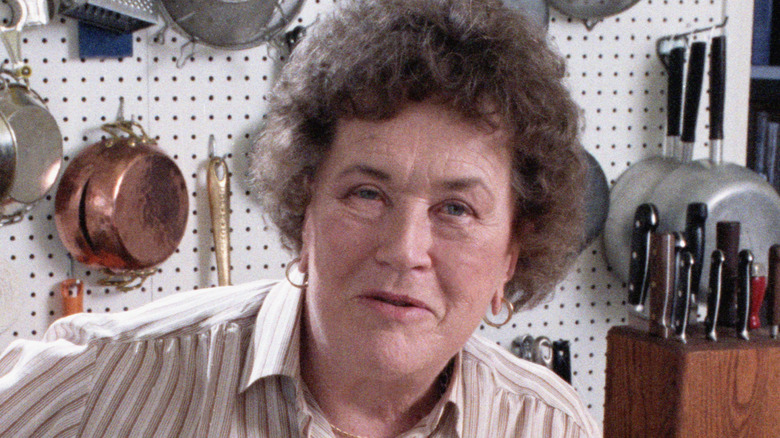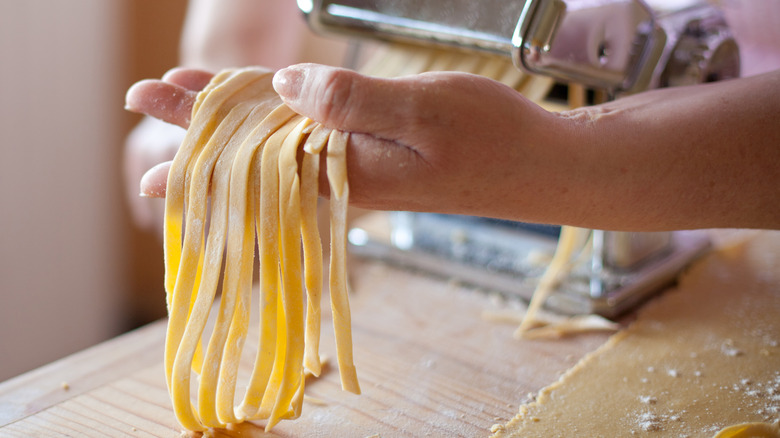For Julia Child Homemade Pasta Was Worth The Effort
If anyone would agree with the idea that everything tastes better from scratch, it's Julia Child. The progenitor of celebrity chefs and televised cooking shows, Julia Child showed America how to make some of the most complex French dishes. Homemade pasta may not be as complex as beef bourguignon, but it still takes more effort than opening a packet of store-bought spaghetti.
In a 1980 episode of "Over Easy," Child discusses the merits of making your own pasta, over a video-clip of her running pasta dough through a pasta machine. She told viewers that the pasta machine is worth the cost, paying itself off in countless batches of fresh pasta we'll make over the years. Pasta is made from two inexpensive ingredients, so in the long-run she says about the cost, that it "is half as much if you make it yourself." She goes on to say that it's also "twice or three times as good" as packaged, processed pasta brands.
A basic pasta dough recipe is a simple blend of eggs and flour, two cheap staples that most households always have. Even if you don't have a pasta machine, all you need are a few simple kitchen tools to make pasta from scratch. A rolling pin can create the classic sheet of dough to cut it into strips with a knife for linguini or fettuccini. You can use a skewer to make the spiraled busiate and a fork to make the ridges in homemade cavatelli.
Tips for pasta making
While pasta is a simple recipe, there are key methods and ratios to follow for a successful outcome. Furthermore, because there are only two ingredients, their quality will make or break the recipe. Common mistakes to avoid when making fresh pasta include using the wrong type of flour; pasta dough requires double zero or 00 flour, the finest type of flour to create the most elastic dough,
The ratio of wet to dry ingredients, that is eggs to flour, should be one egg per 100 grams of flour. You should always use the well method to combine the wet and dry ingredients by creating a crater in a mound of flour for the raw eggs and gradually combining the flour with the eggs. Perhaps the biggest effort you'll make when it comes to homemade pasta is kneading the dough. You'll want to knead the dough as thoroughly as possible until the dough is smooth and stretchy. Form it into a ball and let the dough rest for at least 30 minutes to allow the gluten to develop.
The time it takes to knead and rest the dough will shave time off the boiling process. Fresh pasta takes between two and five minutes to cook, a fraction of the time it takes for store-bought packets. Once you taste fresh pasta, you'll agree with Julia Child that it was worth the effort.

